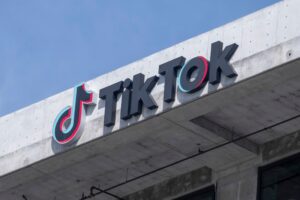The Recognition Factor: How Strategic Employee Appreciation Drives Bottom-Line Results

In a challenging economic landscape where UK businesses face talent shortages, productivity concerns, and increasing operational costs.
Many organisations are overlooking one of the most powerful and cost-effective drivers of business performance: strategic employee recognition.
Far from being a ‘nice-to-have’ HR initiative, properly implemented recognition programmes deliver measurable financial returns that directly impact the bottom line. The data speaks for itself: systematic employee recognition delivers an extraordinary 28x return on investment, making it one of the most financially efficient business investments available to organisations of any size.
The Business Case: Recognition’s Impact on Financial Performance
For business leaders focused on performance metrics, the evidence supporting systematic recognition is compelling:
Organisations implementing structured recognition programmes report a 30% reduction in voluntary staff turnover, representing significant savings in recruitment, onboarding, and training costs
Workplace productivity increases by 37% in organisations with robust recognition practices
Companies experience an average annual gain of £8,500 per employee through enhanced engagement and performance
Absenteeism decreases by 41% with consistent recognition, reducing operational disruptions
Quality metrics improve by 24% when achievement is systematically acknowledged
“Recognition has evolved beyond simple acknowledgement—it’s now about fostering a thriving work culture of appreciation that drives business success,” explains Gary Purcell, CEO of recognition platform provider Amplify. “Our data consistently shows that systematic recognition delivers an astounding 28x return on investment, making it one of the most powerful tools for building engaged, productive teams.”
This return manifests in specific, quantifiable ways across different business dimensions:
Financial Impact Areas:
Reduced recruitment costs (averaging £15,000 per position in the UK)
Decreased training expenses through knowledge retention
Lower absenteeism and associated coverage costs
Improved operational efficiency and output quality
Enhanced customer satisfaction leading to higher retention
Increased sales performance and revenue generation
Despite these compelling figures, only about 30% of UK employees report feeling fully engaged at work—highlighting a significant untapped opportunity for organisations willing to invest in strategic recognition.
Beyond Intuition: The Science of Recognition
While many business leaders intuitively understand that appreciation matters, the extraordinary impact of recognition is now backed by robust scientific research that explains why it delivers such significant returns:
Performance Neurochemistry
Neuroscience research demonstrates that receiving recognition triggers dopamine release in the brain, creating positive neural associations with specific behaviours. This neurochemical response establishes motivation and performance patterns that financial incentives alone cannot achieve.
When recognition is timely and specific, it creates neural pathways that reinforce desired behaviours far more effectively than traditional incentives. Research shows that recognised employees are 63% more likely to remain with their current employer and 49% more likely to consistently exceed performance expectations.
Visibility and Social Connection
Public acknowledgment fulfils fundamental human needs for validation and status among peers. When employees’ contributions are visibly celebrated, it creates powerful social reinforcement that strengthens professional identity and encourages consistent performance.
This visibility factor has become particularly critical in today’s hybrid work environments, where employees may feel disconnected. Digital recognition platforms that create company-wide visibility help maintain cultural cohesion across dispersed teams while providing the validation that drives continued engagement.
The Modern Recognition Infrastructure
Today’s most effective recognition programmes bear little resemblance to outdated “Employee of the Month” plaques. They incorporate sophisticated digital platforms, diverse recognition methodologies, and strategic alignment with business objectives:
Digital-First Architecture
The technological foundation of effective recognition typically includes:
Cloud-based platforms accessible across devices and locations
Mobile-first interfaces enabling real-time recognition
Analytics dashboards tracking engagement patterns and business impact
Integration capabilities with existing business systems
Multi-language support for diverse workforces
Customisable recognition templates aligned with company values
Gamification elements driving consistent participation
Strategic Recognition Types
Comprehensive recognition programmes incorporate multiple forms of appreciation designed to drive specific business outcomes:
Performance Recognition
Achievement-based rewards tied to measurable metrics
Project completion celebrations
Innovation acknowledgments
Sales milestone recognition
Social Recognition
Peer-to-peer appreciation platforms
Team collaboration awards
Cross-departmental acknowledgment
Public celebration of achievements
Values-Based Recognition
Acknowledgment of behaviours that exemplify company values
Cultural contribution awards
Purpose-driven recognitions
Community impact celebrations
Career Recognition
Service milestones that honour tenure
Learning achievement acknowledgments
Mentorship recognition
Skill acquisition celebrations
Implementation: The Recognition Roadmap
For UK businesses looking to implement or enhance recognition programmes, experts recommend a structured approach that ensures both immediate impact and sustained engagement:
Phase 1: Strategic Design (6-8 weeks)
The foundation of effective recognition begins with strategic alignment:
Define clear objectives and expected outcomes
Conduct current state assessment through data analysis
Map recognition criteria to organisational values and priorities
Design recognition frameworks for different employee segments
Create reward structures with appropriate redemption options
Develop programme branding aligned with company culture
Establish governance structures and accountabilities
Define success metrics and measurement approaches
Phase 2: Effective Launch (4-6 weeks)
A well-executed launch strategy drives initial engagement:
Develop comprehensive communication campaigns
Create leadership training on effective recognition delivery
Establish recognition champions across the organisation
Design user engagement strategies and incentives
Implement programme support resources
Create launch events generating visibility
Establish feedback mechanisms for continuous improvement
Deploy platform with initial testing and refinement
Phase 3: Optimisation (Ongoing)
Long-term programme success requires continuous refinement:
Monitor participation metrics and usage patterns
Gather ongoing employee feedback
Analyse recognition data for patterns and insights
Report programme ROI to executive leadership
Refresh programme elements to maintain engagement
Evolve reward offerings based on redemption patterns
Conduct periodic programme assessments
Scale successful elements while refining underperforming aspects
https://www.youtube.com/watch?v=6ISnTV3Aplg
Industry-Specific Approaches
While recognition fundamentals remain consistent, implementation strategies should be tailored to industry-specific challenges and opportunities:
Manufacturing Sector Recognition
UK manufacturing businesses benefit from recognition programmes that emphasise:
Safety achievement recognition
Quality improvement contributions
Process efficiency innovations
Production milestone celebrations
Cross-functional team collaboration
Problem-solving acknowledgments
Technical skill development
Continuous improvement contributions
Financial and Professional Services
Financial sector organisations balance regulatory requirements with engagement needs. Their recognition programmes typically emphasise:
Compliance excellence acknowledgment
Client satisfaction achievements
Risk management contributions
Process improvement recognition
Professional certification accomplishments
Team collaboration across specialised functions
Client relationship milestones
Security and data protection contributions
Retail and Hospitality
Customer-facing businesses benefit from recognition approaches that emphasise:
Customer service excellence
Sales achievement recognition
Product knowledge development
Operational efficiency contributions
Team support acknowledgments
Adaptation to peak trading periods
Brand ambassador behaviours
Problem resolution excellence
Leadership as the Critical Success Factor
The single greatest predictor of recognition programme success is leadership engagement. Research shows that senior leadership involvement increases programme participation by up to 90% and dramatically improves sustainability.
Effective recognition leaders consistently demonstrate specific behaviours:
Personally participate in recognition activities
Publicly acknowledge team and individual contributions
Connect recognition moments to business strategy
Model consistent recognition practices
Share recognition stories in communications
Include recognition metrics in business reviews
Allocate appropriate resources to recognition programmes
Hold managers accountable for recognition engagement
Organisations that develop recognition capabilities in their leadership teams see substantially higher returns on their recognition investments and greater impact from their programmes.
https://www.youtube.com/watch?v=1Kc4ulGymM8
Measuring Impact: The Recognition Analytics Advantage
Modern recognition programmes incorporate sophisticated analytics that demonstrate tangible business impact:
Core Performance Indicators
Employee retention rates compared to industry benchmarks
Engagement scores through regular pulse surveys
Recognition activity levels across departments
Programme participation rates among eligible employees
Recognition diversity across different achievement types
Manager participation in recognition activities
ROI calculations based on retention and productivity
Customer satisfaction correlation with recognition activity
Advanced Analytics Applications
Forward-thinking organisations are implementing advanced analytics approaches including:
Predictive modelling to identify engagement risk factors
Correlation analysis between recognition and business outcomes
Recognition network mapping to visualise cultural connections
Sentiment analysis of recognition messages
Pattern identification for high-impact recognition moments
ROI forecasting based on programme adjustments
Recognition equity analysis across demographic segments
Value alignment measurement through recognition content
These analytics capabilities allow organisations to continuously refine their recognition approaches for maximum impact while demonstrating clear return on investment to executive leadership.
SME Advantage: Recognition for Smaller Businesses
While large corporations dominate discussions about recognition programmes, small and medium enterprises often have natural advantages in implementing effective recognition:
Greater visibility of individual contributions
More direct connection between leadership and employees
Faster implementation of new initiatives
Enhanced ability to personalise recognition
More immediate impact on company culture
Clearer connection between individual effort and business results
Greater flexibility in programme design and evolution
Stronger social connections reinforcing recognition impact
For SMEs, even modest investments in structured recognition can yield substantial returns through enhanced retention, productivity, and customer service quality.
https://www.youtube.com/watch?v=ZPuUcrdiEQU
The Business Outlook: Recognition as Competitive Advantage
In today’s challenging business environment, strategic recognition has evolved from a discretionary HR initiative to a business-critical advantage. As organisations navigate unprecedented workforce challenges—from talent shortages to hybrid work models—recognition provides a powerful lever for building the engaged, resilient workforces needed for business success.
Comprehensive industry analysis demonstrates that organisations with strategic recognition programmes outperform those without across multiple key metrics:
31% lower voluntary turnover
37% higher productivity
22% higher profitability
21% higher customer satisfaction scores
41% fewer quality incidents
27% lower absenteeism
33% higher NPS scores
The organisations that implement comprehensive, strategically aligned recognition programmes now will be best positioned to attract, retain, and motivate the talent needed to thrive in an increasingly competitive business landscape. As workforce expectations continue to evolve, recognition will remain a critical differentiator between organisations that struggle with talent challenges and those that transform them into sustainable competitive advantage.



